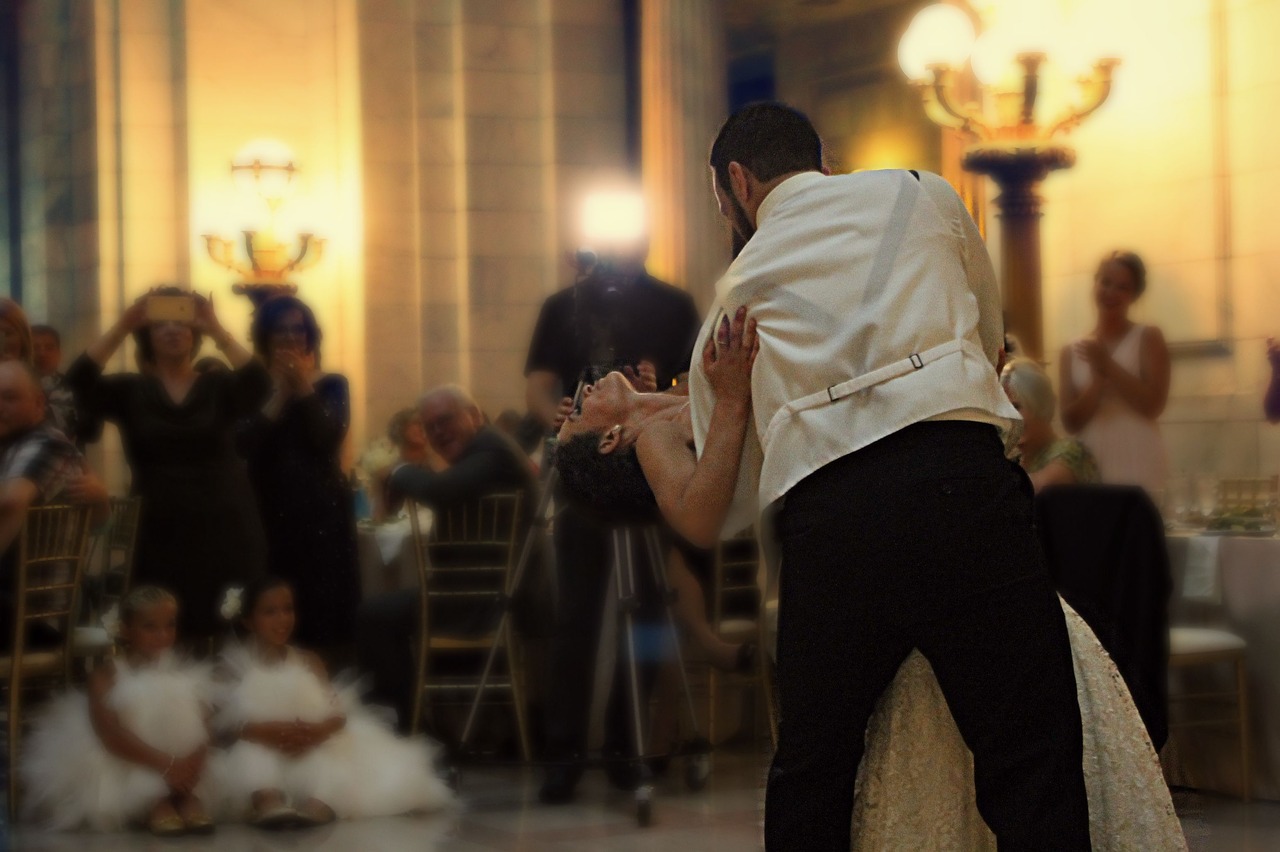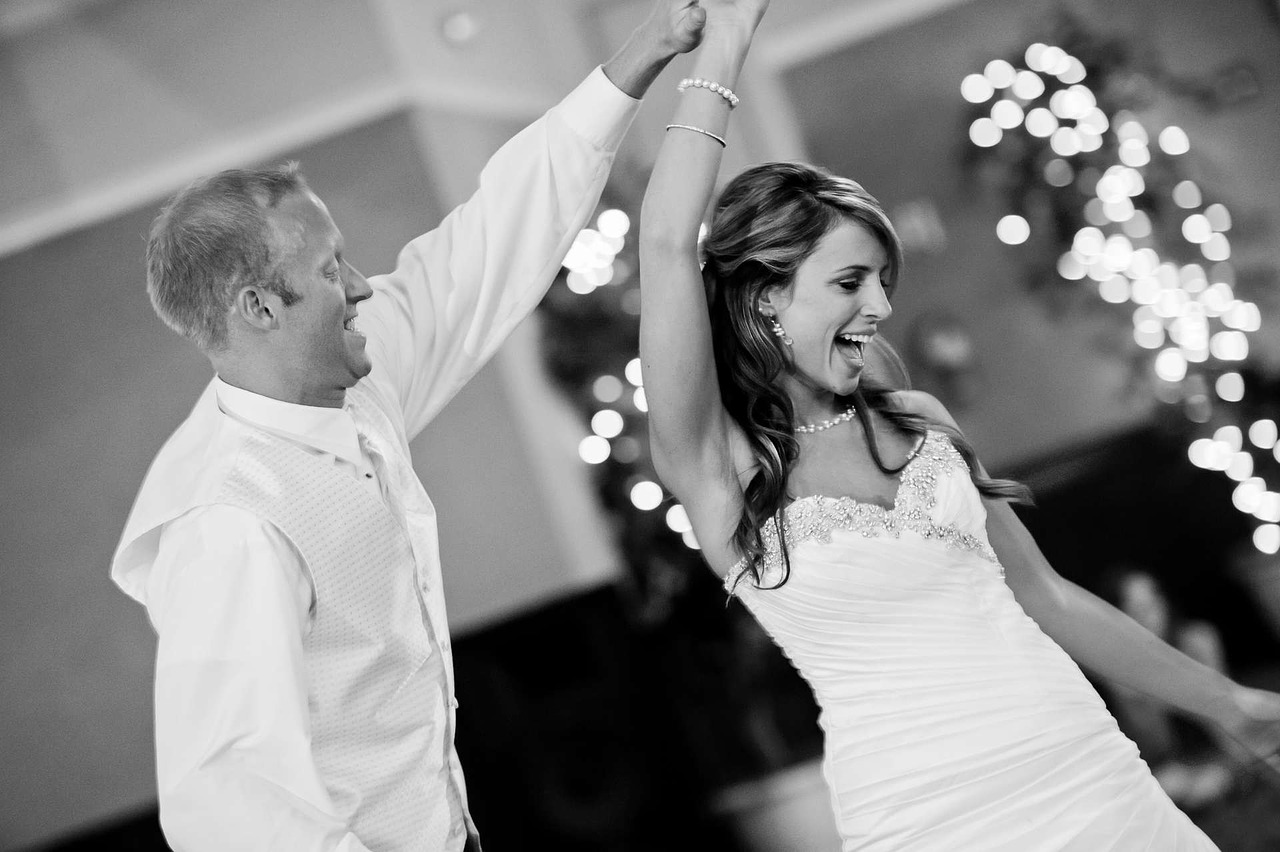Wedding dances are a memorable part of any wedding celebration, capturing joyful and heartfelt moments that resonate with the couple and guests.
Planning these dances can feel overwhelming, but couples can create an enjoyable flow to the night with a clear guide and a structured approach.
This guide breaks down each step, from selecting the right dances to curating an unforgettable dance experience for everyone.
Let's get straight to the point
Planning your wedding dances can be simple with a clear plan: start with meaningful dances like the First Dance, Father-Daughter, and Mother-Son dances, keeping them around 2-3 minutes to keep the energy up.
Select songs that reflect your unique bond, practice for confidence, and coordinate with your DJ or MC for smooth transitions.
Add personal touches like surprise routines or cultural dances, and wrap up with a final dance inviting everyone to join. Remember to rehearse, personalise, and have fun—these dances will be unforgettable moments of your special day.
1. Types Of Wedding Dances

Wedding dances generally follow a sequence highlighting special relationships, starting with the couple and including family members and friends. Here’s an overview of the main types of wedding dances to help you decide which ones to include in your celebration.
The First Dance
The first dance between the newlyweds is a tradition that allows the couple to share a private moment amidst the festivities.
- Timing: This dance often opens the dance floor and usually takes place after dinner or once guests have settled in.
- Personal Touch: Choose a song that has meaning to your relationship. It can be a song from a memorable date, a shared favourite, or a new tune that fits the moment.
Father-Daughter Dance
This dance between the bride and her father symbolises the transition from family to married life.
- Traditional Dance: Usually follows the first dance, allowing for a graceful and smooth transition.
- Song Selection: Pick a song that represents the bond between father and daughter. This could be a tune from childhood or one with sentimental value.
Mother-Son Dance
The mother-son dance celebrates the groom’s relationship with his mother and is often emotional.
- Placement in Sequence: Typically follows the father-daughter dance.
- Song Choice: Select a song that resonates with the relationship, whether a gentle ballad or a song with a shared history.
Wedding Party Dance
Including the wedding party in a dance can bring energy to the celebration and involve close friends.
- Participation: Invite bridal parties, bridesmaids, and groomsmen to join the dance floor.
- Song: Choose a fun, upbeat song to signal that everyone is welcome to start dancing.
Open Dance Floor
Once formal dances are complete, the dance floor opens up for everyone to join, creating a lively atmosphere.
- Transition: Announce that the dance floor is now open to all guests.
- Playlist: Create a playlist that appeals to various age groups, starting with classics and moving to modern hits.
2. Tips For Choosing Wedding Dances
Choosing the right dances and songs can seem daunting, but the following tips can guide your decision-making.
Selecting Meaningful Songs
The music chosen for wedding dances should reflect the personalities and stories of the people involved. Here’s how to go about it:
- Make It Personal: Choose significant songs or reflect on your journey together.
- Balance Tradition with Personal Taste: If a song is meaningful but doesn’t quite fit the "wedding" vibe, consider an instrumental version or cover.
- Length Matters: Keep the dances short—two to three minutes is ideal for maintaining guest engagement without dragging.
Matching The Dance Style To The Song
The style of dance you choose can set the tone for the evening and create a memorable experience for guests.
- Formal Dance Styles: Ballroom or waltz dances work well with traditional or classical songs.
- Fun, Upbeat Dance Styles: If you have an upbeat, fun song, consider swing or a lively routine.
- Practice Together: Practicing ensures confidence and comfort, so rehearse to get the rhythm right.
Preparing For The Dance Floor
Preparation helps ensure you feel comfortable and look your best during each dance.
- Dress Considerations: For brides, ensure your dress has a bustle if it’s long so it won’t trip you up.
- Comfortable Shoes: Ensure you can comfortably dance in your shoes. Many brides choose a second pair for the reception.
- Take Lessons: If you’re nervous about dancing in front of guests, consider taking lessons to build confidence.
3. Planning And Organising the Wedding Dance Sequence
Careful planning of the dance sequence helps keep the night's flow smooth and ensures that every significant person is acknowledged.
Setting The Order Of Dances
Most wedding receptions follow a traditional dance order but can be modified according to personal preference.
- Traditional Sequence: Usually, it goes as follows—First Dance, Father-Daughter Dance, Mother-Son Dance, Wedding Party Dance, then Open Dance Floor.
- Customising the Order: You can change the order based on family dynamics or timing preferences.
- Coordinate with the DJ or MC: Ensure the DJ or MC has a copy of the order and timing for each dance to avoid confusion.
Announcing Each Dance
Clear communication with guests and cues from the DJ or MC can help smoothly transition between dances.
- Announcements for Transitions: The MC should announce each dance, giving guests a brief explanation so they understand the sequence.
- Cue for Group Dances: When it’s time for everyone to join, the MC should announce and invite everyone to the floor.
Organising A Playlist For Different Moments
A well-planned playlist can create the right atmosphere and entertain guests all night.
- Start Slow: Begin with classic songs that appeal to older guests or close family members.
- Move to Modern Hits: Gradually introduce more upbeat and contemporary songs as the night progresses.
- Consider Guest Preferences: Include popular songs for various generations, ensuring everyone finds something they enjoy.
4. Personalising The Wedding Dances
Customising the dances adds a special touch, creating memorable moments for the couple and guests.
Adding A Surprise Twist
A surprise twist during a dance can make your wedding stand out and entertain your guests.
- Start Slow, End Fast: Begin the first dance with a traditional song, then surprise everyone by switching to an upbeat song.
- Choreographed Group Dance: Organise a group dance with the bridal party to surprise guests after the main dances.
Including Unique Elements
Personal touches or unconventional choices can make your wedding feel more authentic and memorable.
- Incorporate Cultural Dances: If you have a traditional dance from your culture, consider including it as part of the evening’s events.
- Dedicate a Song to Family: Dedicate a song to honour special family members or friends, adding a heartfelt moment to the celebration.
Fun Dance Games
Dance games are a great way to entertain guests and involve everyone in the celebration.
- Dance Circle: Form a dance circle and invite guests to take turns showing off their moves.
- The Shoe Game: Although not a dance, this game involves the couple answering questions by holding up their shoes—a lighthearted way to involve everyone.
5. Practical Tips For A Smooth Dance Experience

Preparing for the practicalities of the wedding dances will keep you relaxed and ready on the big day.
Practice Makes Perfect
Rehearse your planned dances to ensure confidence and comfort when it’s time to perform.
- Rehearse with the DJ: If possible, practice with the DJ or recorded music to get a feel for the timing.
- Full Dress Rehearsal: Practice at least once in your wedding attire so you know how your clothes and shoes feel.
Comfortable Footwear For Dancing
Choose shoes that let you dance comfortably all night without blisters or sore feet.
- Opt for Dance-Friendly Shoes: Choose comfortable shoes you can easily move in.
- Consider Flats or Sneakers for Later: Many brides change into flats or sneakers for the reception so they can dance freely.
Avoiding Dance Floor Mishaps
Small details can prevent accidents and ensure everyone stays safe while having fun.
- Non-Slip Shoes: Choose shoes with good grip to avoid slipping on the dance floor.
- Brief the Bridal Party: Inform the bridal party of their roles and give them cues to avoid confusion during transitions.
6. Wrapping Up The Night With A Final Dance
The final dance of the night is an opportunity to bring everyone together and end on a high note.
Choosing A Memorable Last Song
Select a final song that leaves a lasting impression and brings the evening to a close.
- Slow and Sentimental: Consider a gentle, heartfelt song that everyone can sway to.
- Upbeat and Celebratory: Alternatively, go for an energetic song that encourages everyone to join the dance floor.
Encouraging Guest Participation
Invite guests to join in, creating a sense of unity as the celebration concludes.
- Invite Everyone to Join: Ask everyone to join you on the dance floor, creating a final shared moment.
- Group Photo Opportunity: Consider having the photographer capture a final dance photo with everyone on the floor.
Conclusion
Wedding dances bring magic to your celebration, creating intimate and joyful moments for you and your guests.
By following a thoughtful approach to planning, from choosing meaningful songs to coordinating the flow of the dances, you can set a memorable tone that resonates throughout the night.
Make it personal, rehearse, and have fun—these dances reflect your unique love story and the connections you cherish.
With some preparation and creativity, your wedding dances can become one of the most unforgettable parts of your special day, ensuring a night filled with laughter, love, and dancing that will be cherished forever.
FAQs About Wedding Dance
- Cupid Shuffle.
- Cha Cha Slide.
- Electric Slide.
- The Wobble.
- Y.M.C.A.
- The Chicken Dance.
- Cotton Eyed Joe.
- Old Town Road.
Two decades ago, Mr. C The Slide Man changed dance floors forever with the release of the Cha-Cha Slide. The routine has become one of the most popular wedding line dances of all time.

